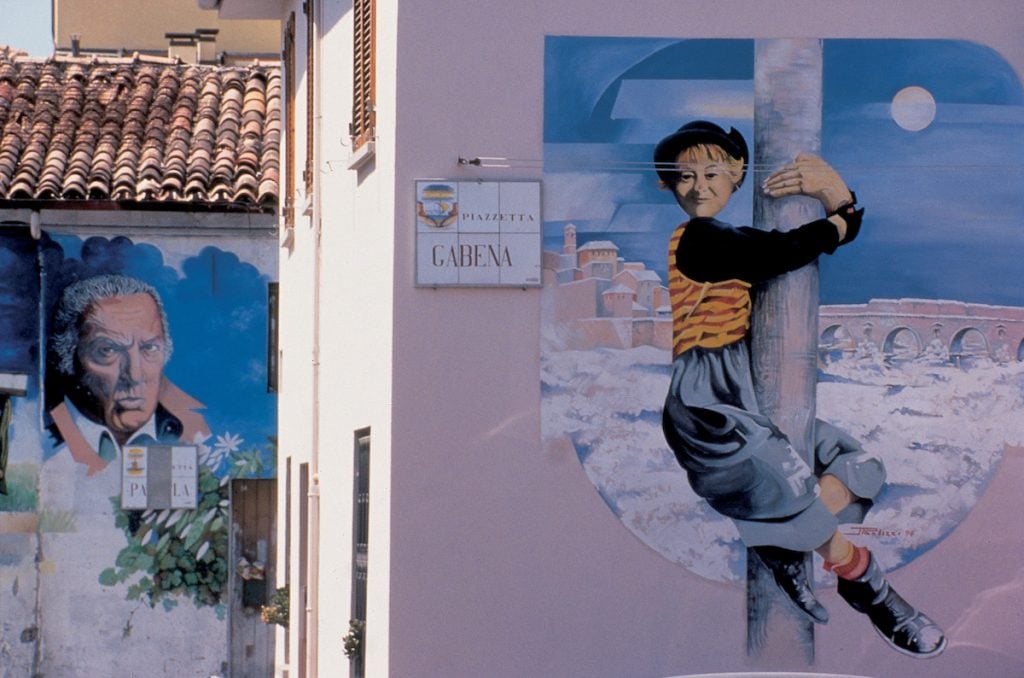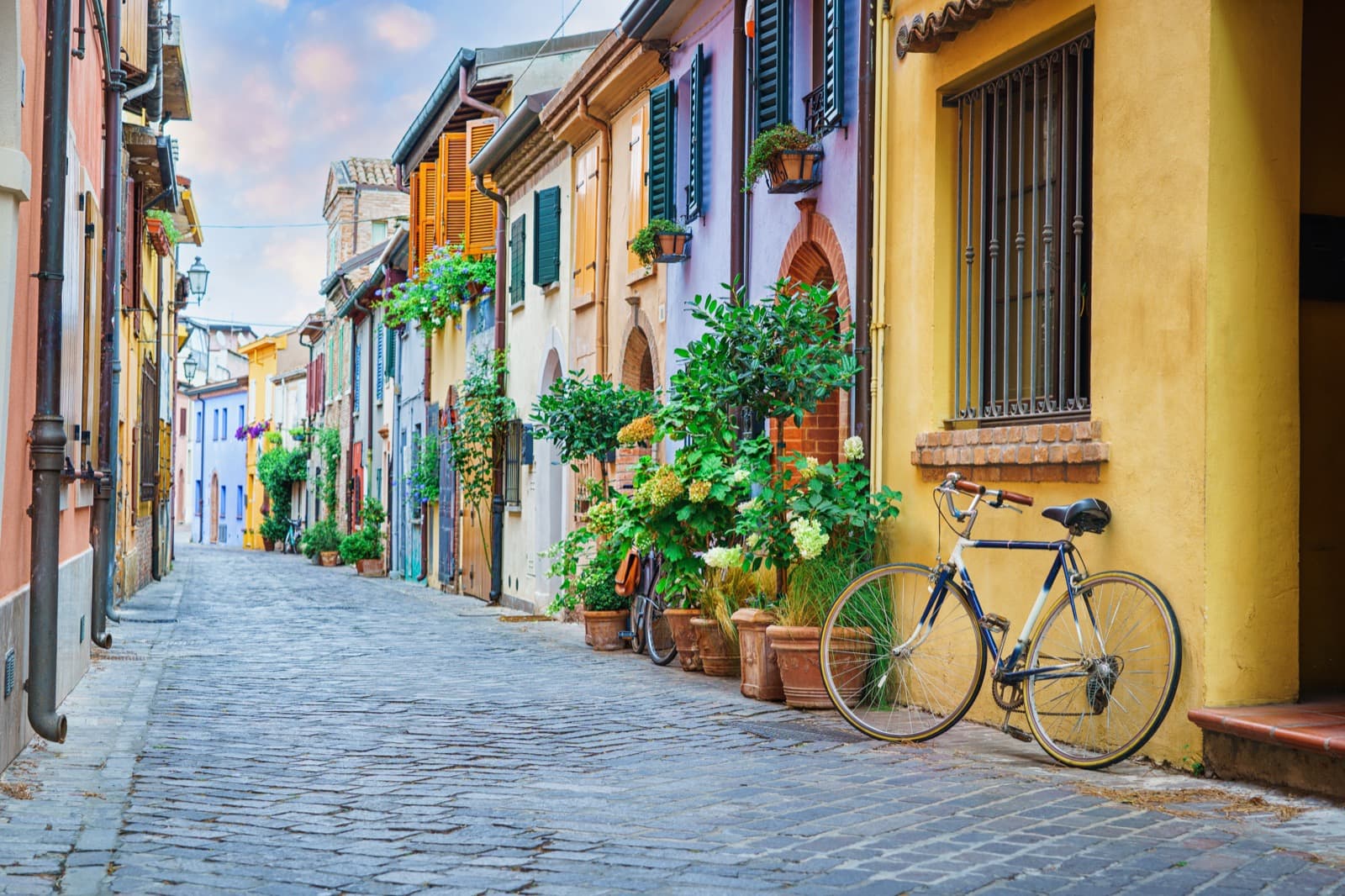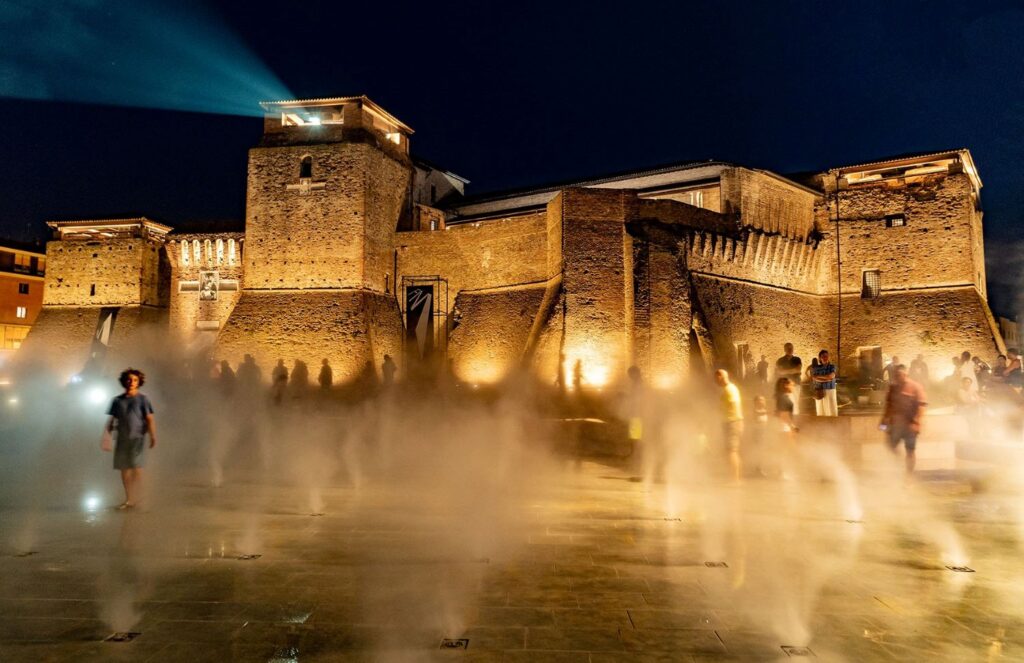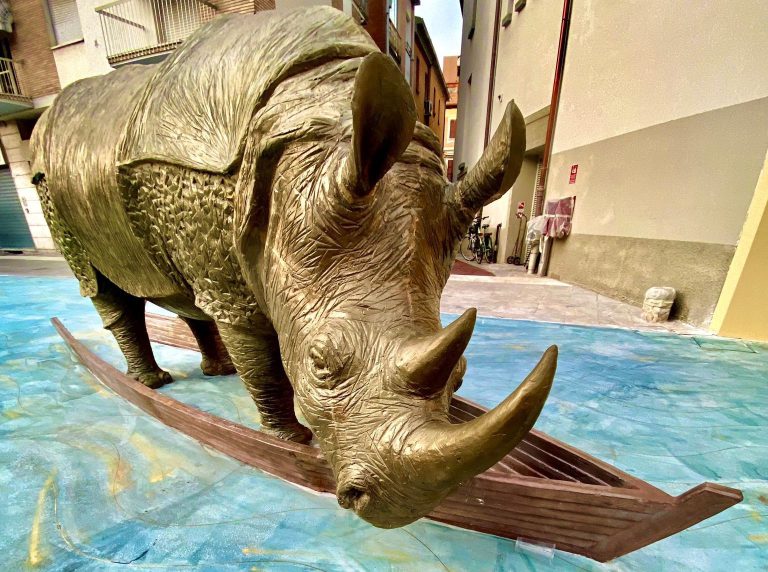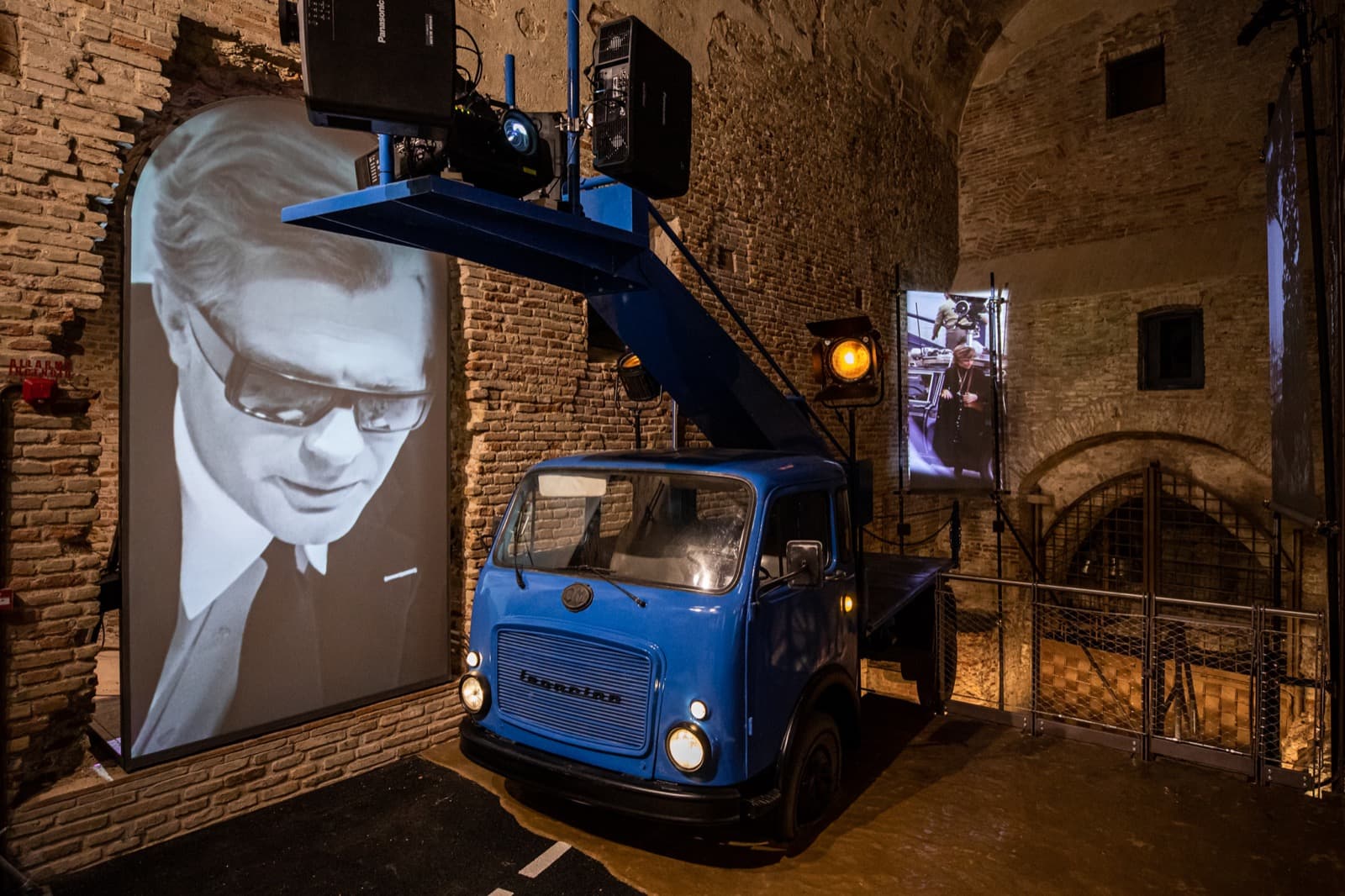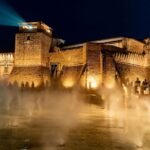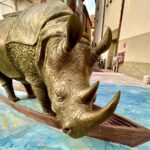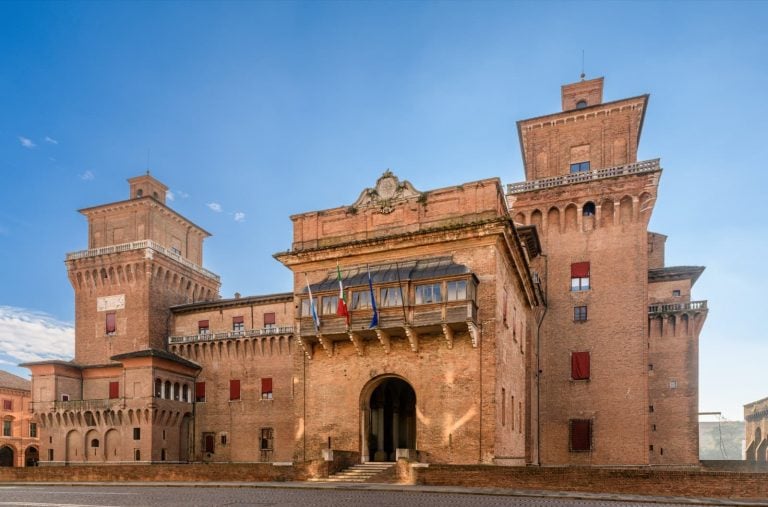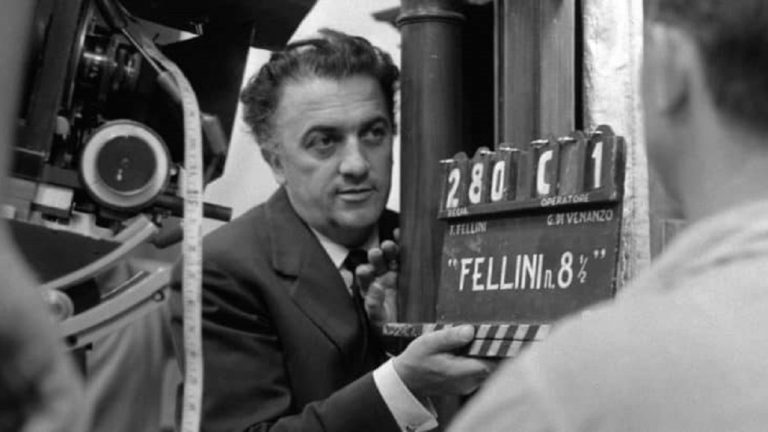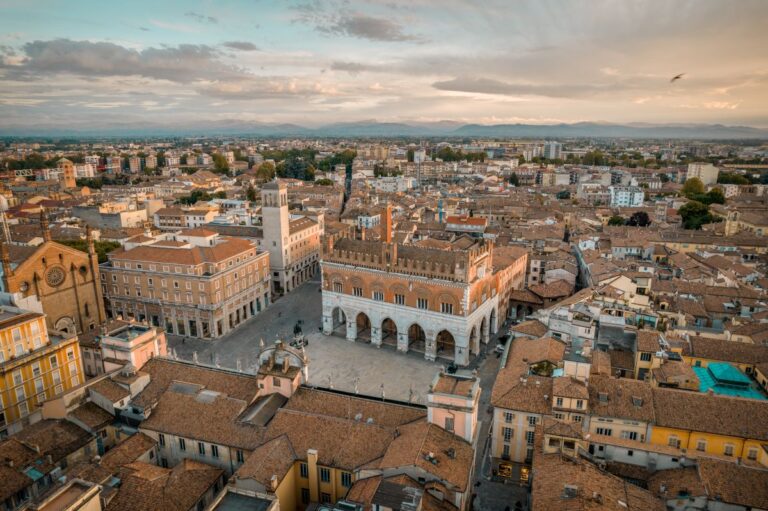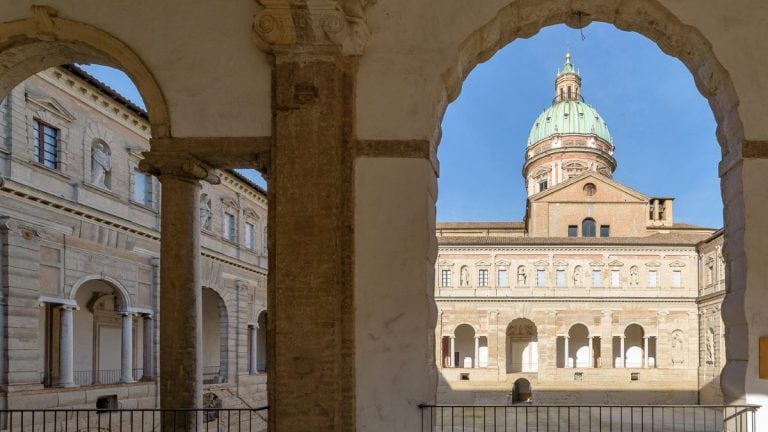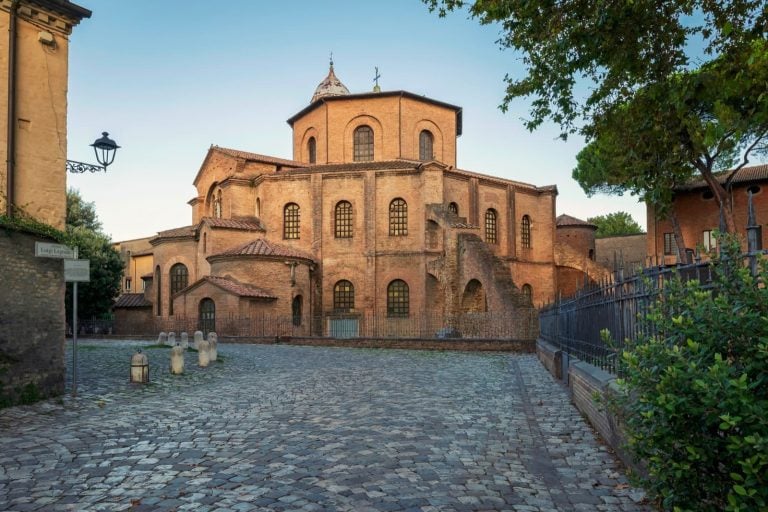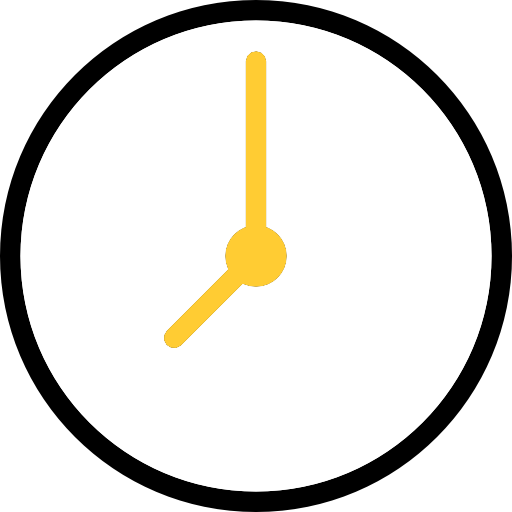
Time
48 h
Roman and contemporary, a city of art and a seaside town, Rimini eludes any definition because it’s a multi-faceted city, and a truly unique place.
Today we’ll take you on a stroll through the streets of its old town, perhaps less frequented by summer holidaymakers but undoubtedly full of beautiful surprises.
In our 10-stage tour we will tell you about Rimini’s most iconic museums, monuments and squares, immersing ourselves in the sometimes dreamlike atmosphere of the city that gave birth to the great Federico Fellini.
1. Tempio Malatestiano
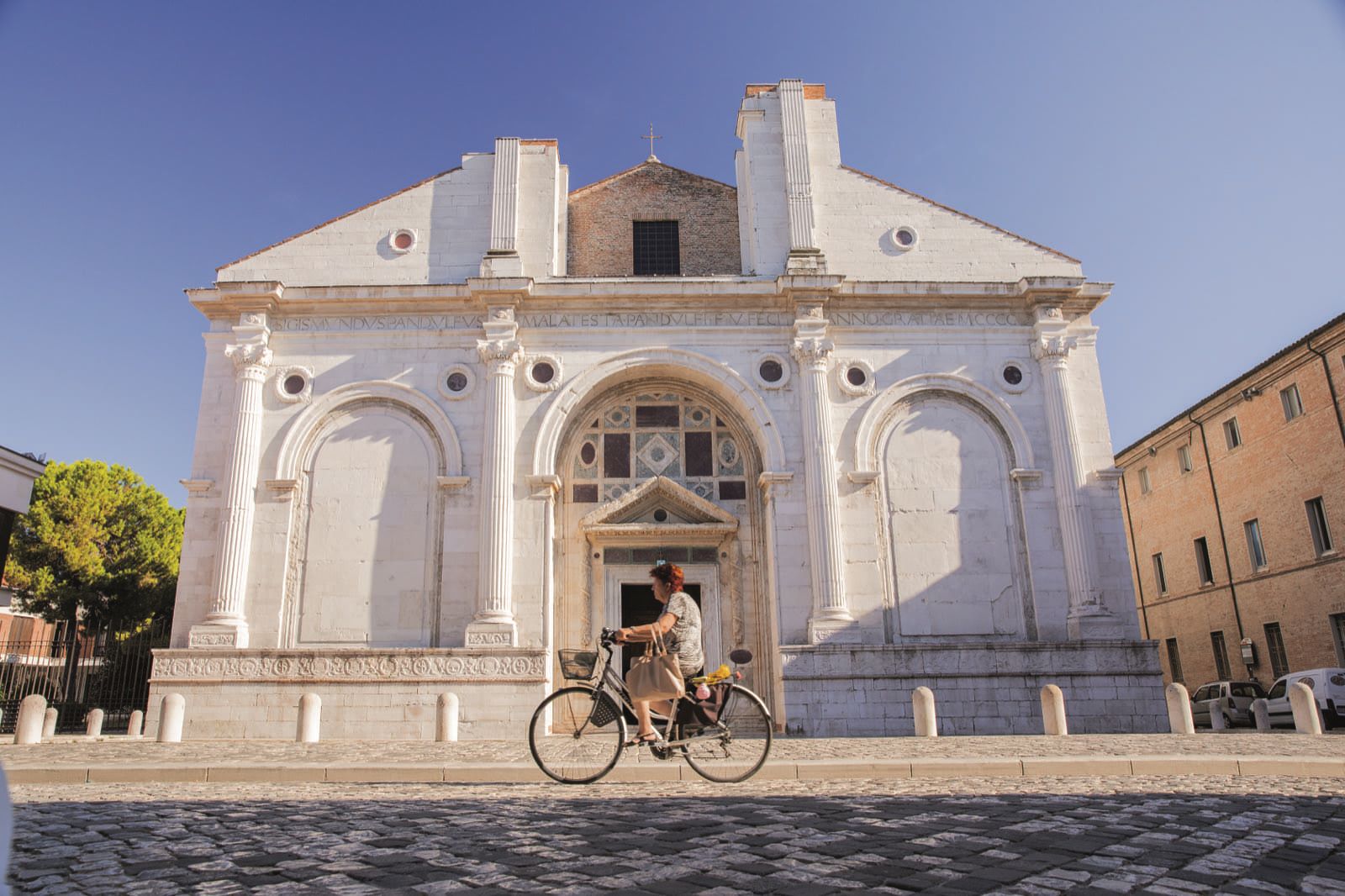
The first stop on our Rimini itinerary is the Malatesta Temple, the city’s cathedral and an excellent example of Renaissance architecture. Looking at it from the outside, it is impossible not to notice its unfinished façade: the original design by architect Leon Battista Alberti, which included a dome, was never completed.
Commissioned by the Lord of Rimini Sigismondo Malatesta to house his family chapel, the Temple was built from the mid-15th century onwards. If in its external forms it nods to classicism, in its interior we can see the typical features of the Gothic style. The building has a single nave with six side chapels concealing noteworthy masterpieces.
Not to be missed is Piero della Francesca‘s fresco depicting ‘Sigismondo Pandolfo Malatesta praying before San Sigismondo’ in the relics cell, and the striking Chapel of the Planets with its bas-reliefs depicting the signs of the zodiac. Another masterpiece housed inside the church is the panel crucifix attributed to Giotto.
2. Domus del Chirurgo

The Roman foundation of the city has left very evident traces in the city centre, which we will discuss in a moment.
The Surgeon’s Domus archaeological site, on the other hand, is a bit more hidden, but just as surprising. You have to enter a glass and steel structure to admire it; once inside, the view is just breathtaking. This ancient dwelling houses a marvellous mosaic floor dating back to the 2nd century A.D., discovered in the 1980s during public works in Piazza Ferrari.
Among the most impressive artefacts found in the domus is undoubtedly the trove of medical tools belonging to the surgeon who lived there; to get a closer look at them, just move a few metres and head for the City Museum.
3. Museo della Città
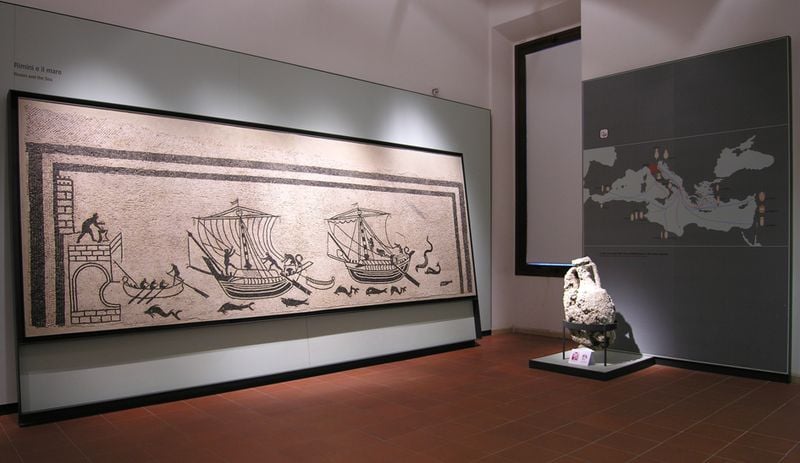
Just a few steps away from the Surgeon’s Domus is the Luigi Tonini City Museum, housing a vast collection of works from prehistory to the present day including an archaeological section and an art gallery.
Here you can find frescoes, panels and paintings from the 14th century up to the last century, with works by masters such as Giovanni Bellini, Ghirlandaio, Guercino and Filippo de Pisis, as well as examples of the work of René Gruau, a famous Rimini artist and illustrator.
4. Piazza Cavour
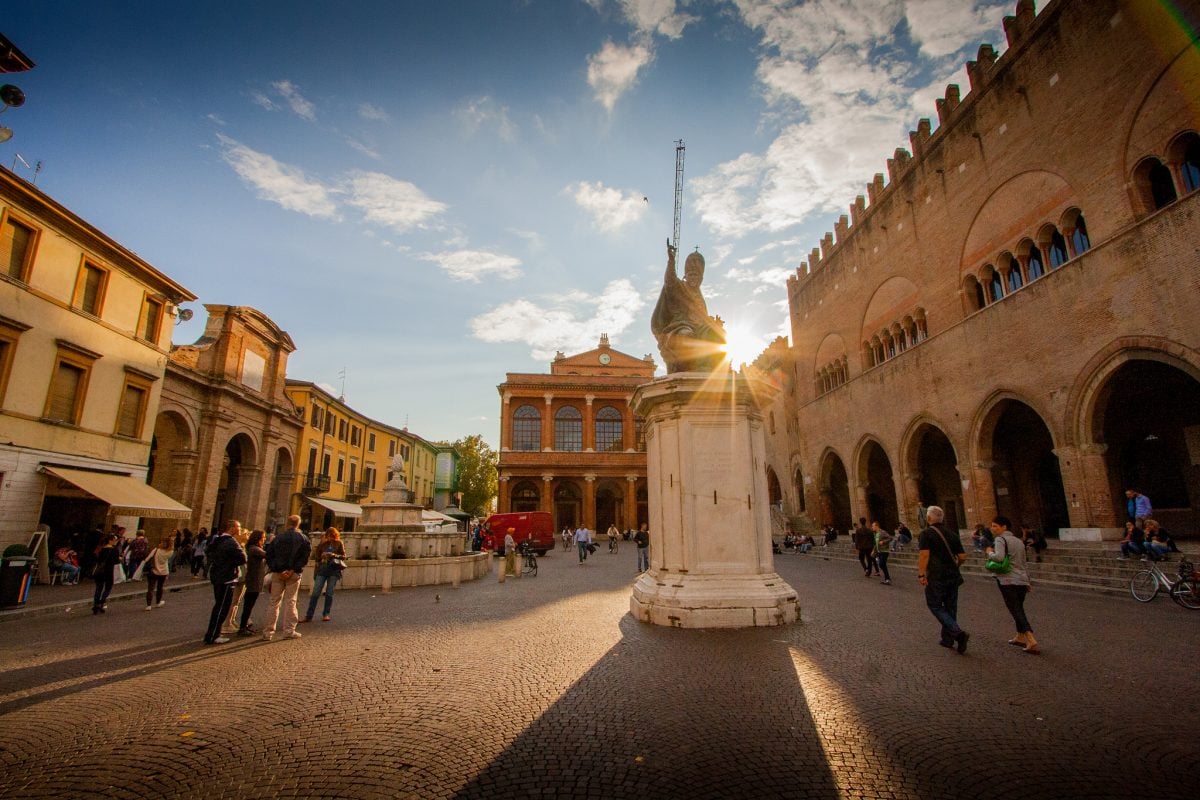
Let’s now reach the lovely elegant Piazza Cavour, often referred to as the ‘drawing room of Rimini’, and overlooked by numerous important buildings.
Coming from Corso d’Augusto, the first building standing in front of us on the opposite side of the square is the Amintore Galli Theatre, inaugurated in the mid-19th century by Giuseppe Verdi.
In the middle of the square, we can find the Fontana della Pigna fountain and the statue of Paul V, while on the left there’s the so-called Vecchia Pescheria, which once housed fish sellers and is now the hub of Rimini’s nightlife.
On the other side of the square stand Palazzo Garampi, the seat of the City Hall, and the two ‘Palazzi dell’arte’ (Palazzo dell’Arengo and Palazzo del Podestà), housing the Fondazione San Patrignano Collection and a marvellous 14th-century fresco by Giovanni da Rimini.
5. Ponte di Tiberio
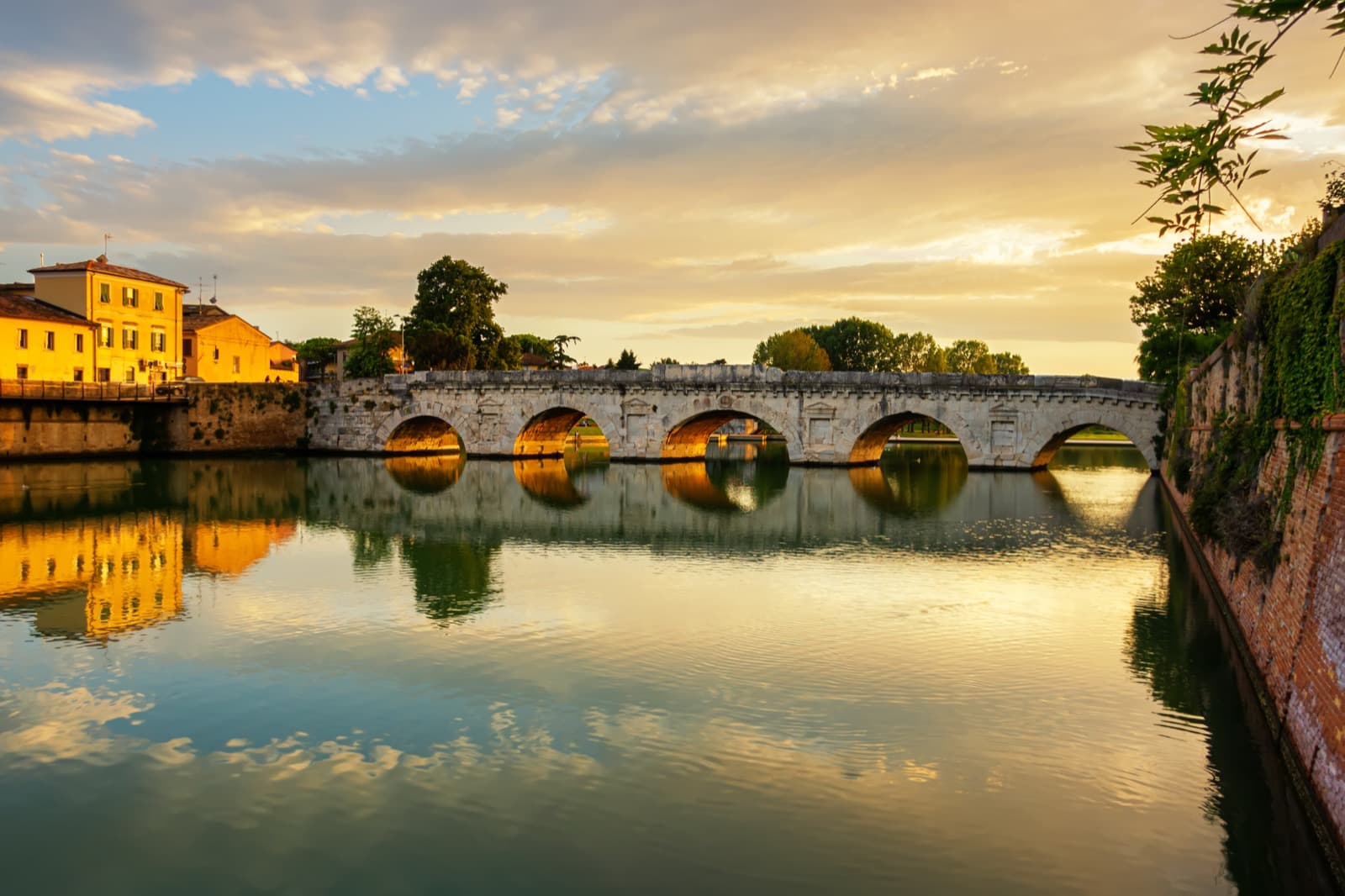
One of the city’s landmarks, for over 2000 years the Tiberius Bridge has reminded us that Rimini was born under the Romans. But it is also a living testimony to their incredible technical and engineering skills, which enabled it to survive a long series of adverse events (fires, earthquakes, floods and attempted explosions).
Made of Istrian stone, the bridge’s five Doric-style arches connect the two banks of the Marecchia River, marking the starting point of two important consular roads: the Via Aemilia and the Via Popilia, which led to Adria via Ravenna.
Commissioned by the Emperor Augustus but then completed under Tiberius in 21 A.D., today the bridge is completely pedestrianised. We recommend reaching the Piazza sull’Acqua below the bridge to enjoy the marvellous view of its thousand-year history, especially at sunset.
6. Borgo San Giuliano
Having crossed the Tiberius Bridge, let’s head for the next stop on our tour through the streets of Rimini. Borgo San Giuliano is a district that originated around the year one thousand to accommodate Rimini’s fishermen families.
Today, it has become an unmissable destination for travellers and nightlife lovers alike, attracted by the bars and restaurants that crowd its narrow streets.
The peculiarity of the Borgo is undoubtedly its colours, those of its multicoloured houses as well as those of the murals that have gradually appeared on its walls since the 1980s.
The murals’ subjects are varied, but one the most recurring is the figure of Federico Fellini and his cinema. Fellini loved the alleys and small squares of the Borgo, which reciprocated by painting portraits and scenes from his films on the outside walls of its houses.
7. Fellini Museum
Rimini, Fellini Museum | Ph. Archivio Comune di Rimini
Rimini, rinoceronte di Palazzo del Fulgor | Ph. fellinimuseum.it
Fellini Museum, Rimini Ph. Lorenzo Burlando
Speaking of the great Rimini director, we cannot fail to mention the Fellini Museum, opened a few years ago. The museum embraces three places in the city centre: Castel Sismondo, the ancient Rocca Malatestiana, where we can find scenographic and impressive displays inspired by the life and works of the director; the Palazzo del Fulgor housing a series of documents and audiovisual, film and digital archives and Piazza Malatesta, known as the Piazza dei Sogni (Square of Dreams), characterised by various installations reminiscent of Fellini, from the ‘fog’ that rises in front of the fortress, recalling the passage of the transatlantic liner Rex in Amarcord, to the golden circus ring that recalls the final roundabout in the film 8 ½.
8. Cinema Fulgor
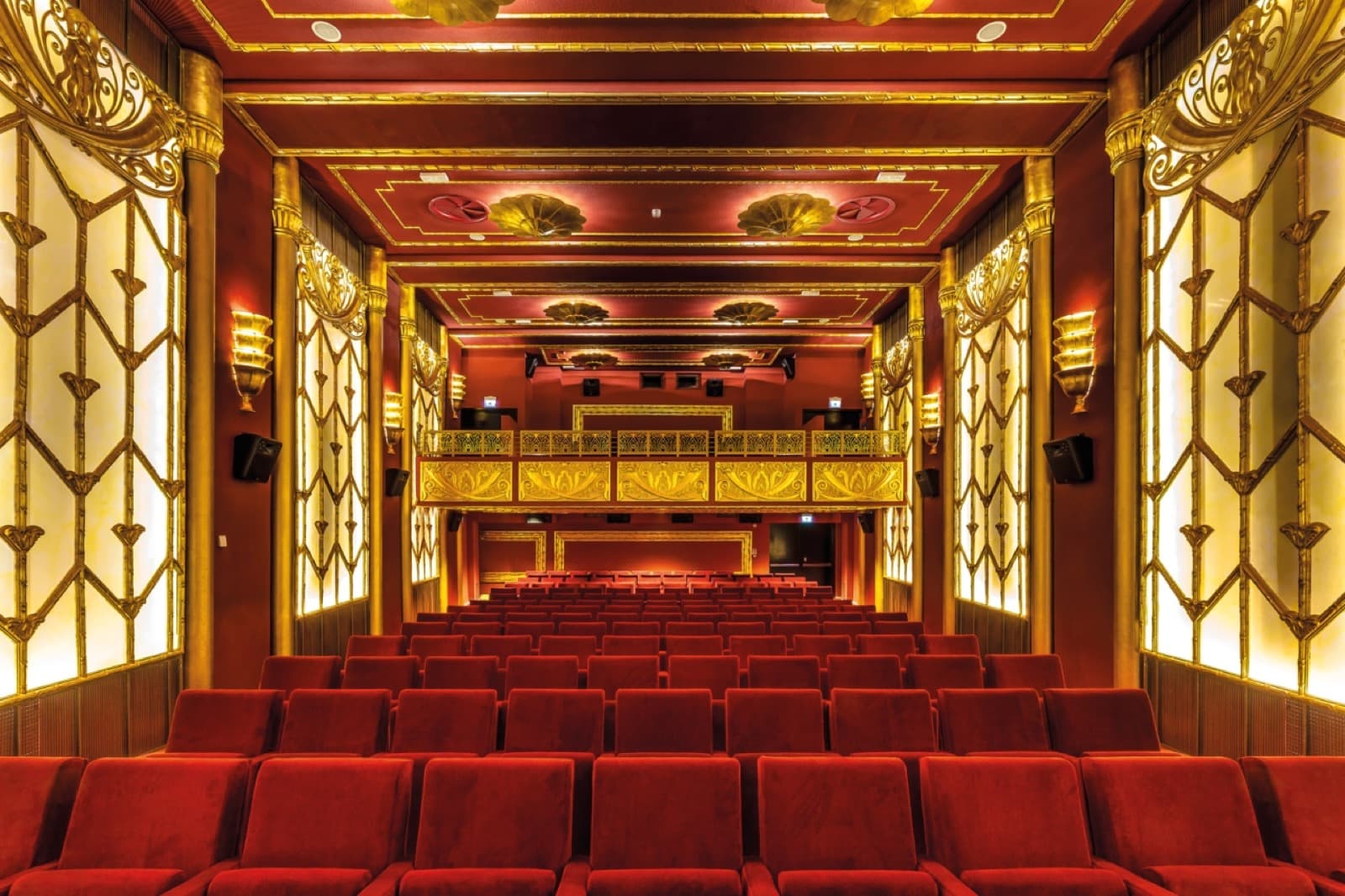
One of Fellini’s places in town is the Cinema Fulgor, located on the ground floor of the building of the same name on Corso d’Augusto.
This is the cinema that Fellini used to visit in his early years; here he saw his first film in the company of his father. After being closed for many years, in 2018 the city returned its iconic cinema to the public, re-designed by Oscar-winner Dante Ferretti in the Hollywood style of the 1930s. The perfect setting to enjoy a cinematic break during our tour.
9. Arco di Augusto
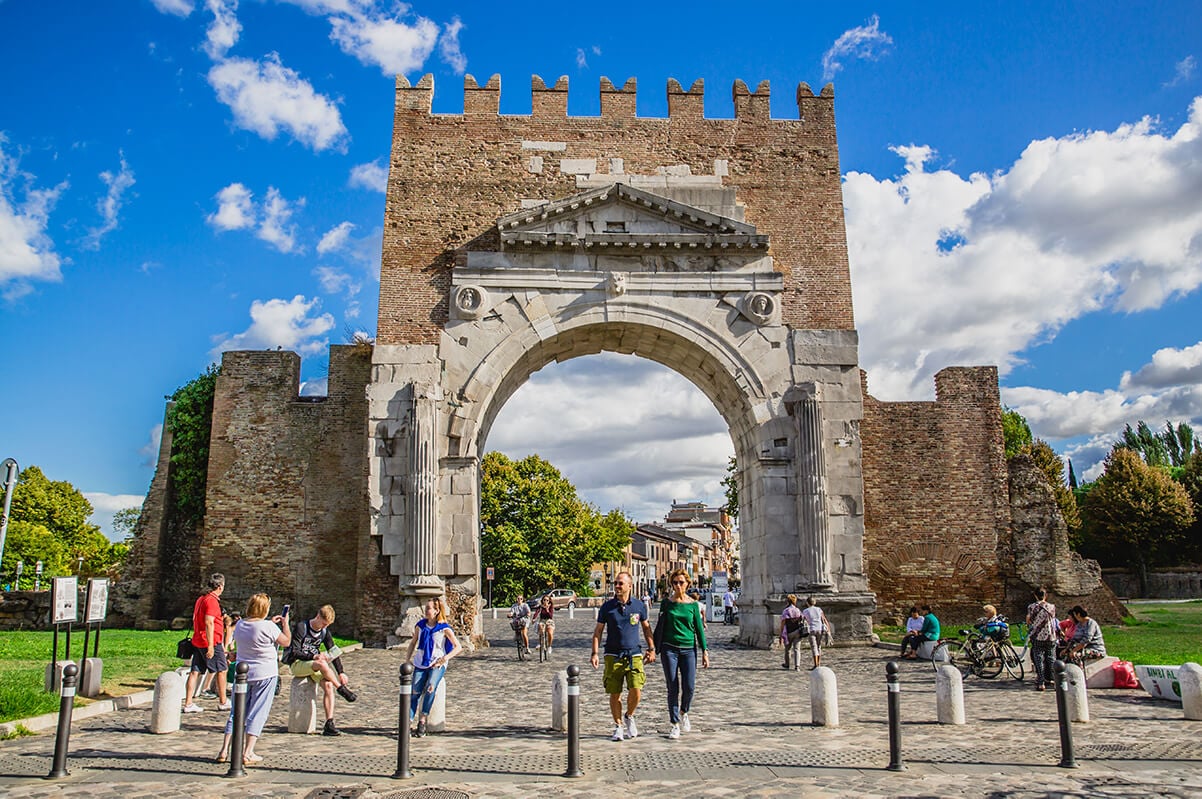
At the opposite end of the city centre from the Tiberius Bridge stands another symbol of Roman Rimini, the Arch of Augustus. Also made of Istrian stone, the arch dates back to 27 B.C. and is therefore the oldest in northern Italy.
Once part of the city walls of the city, later demolished, the monument symbolising Augustus’ power was built at the end point of the Via Flaminia. If we sharpen our eyes, we can admire the four round-shaped clipei adorning the upper part of the structure, depicting Jupiter and Apollo (on the outer side) and Neptune and Rome (facing the city centre).
10. Parco del mare
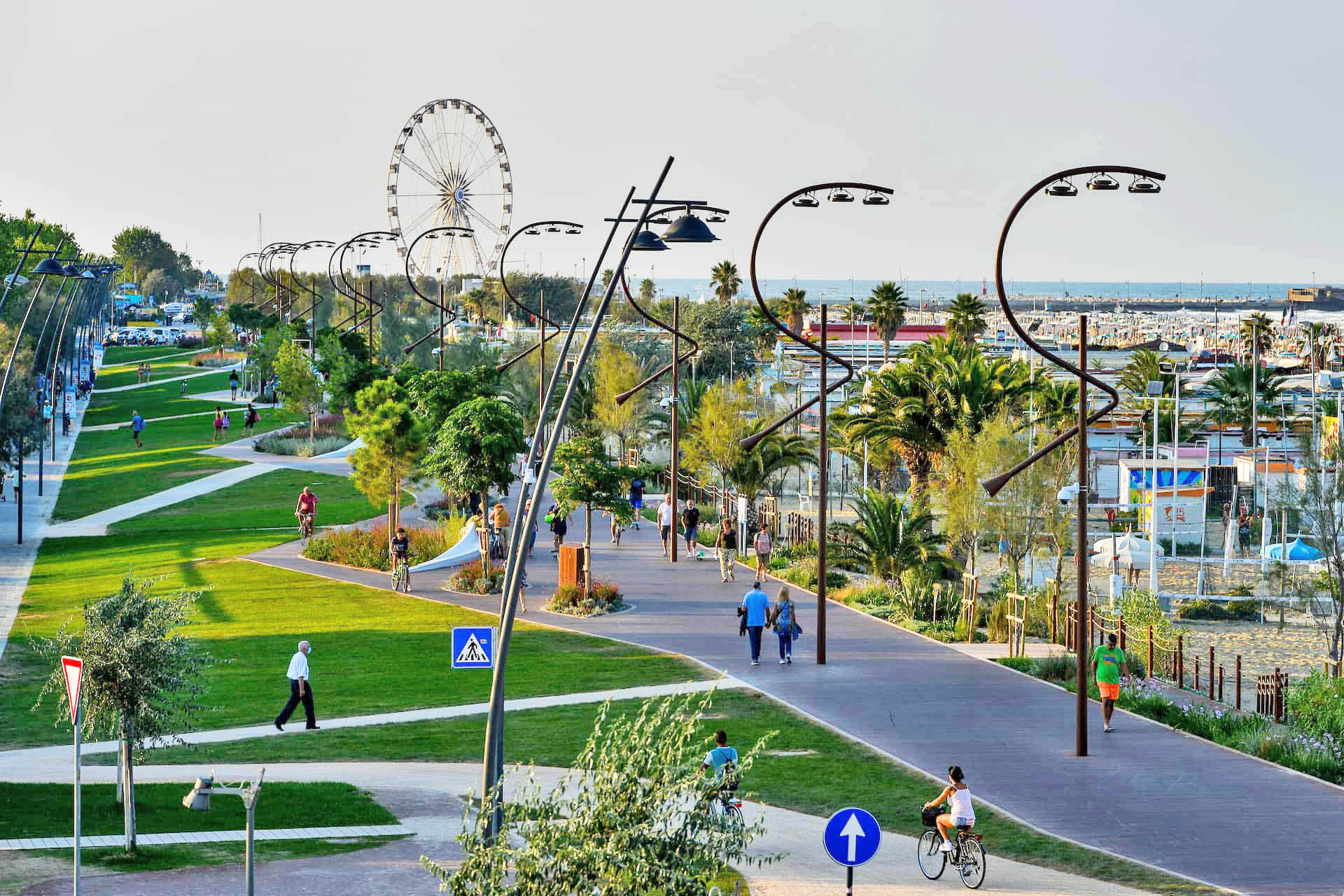
Let’s move away from the centre and head for the seafront for the last stop on our tour. After a 30-minute walk (or a short bus ride), we get in front of the Grand Hotel – another Fellini site – and then make our way to the Parco del Mare, the new 16-kilometre-long pedestrian promenade connecting the entire Rimini Riviera, from Torre Pedrera to Rivabella.
This green area is dedicated to wellness, sports and games, and equipped with cycle paths, an open-air gym, a basketball court, play areas and much more.
Author

Maria Grazia Masotti
An eternal dreamer, but I try to stay grounded. I was raised in the countryside but I love big cities. I’m always ready for a trip, as long as it’s sustainable.
You may also like
Piacenza, cosa vedere in 10 tappe a piedi
by Maria Grazia Masotti /// January 17, 2025

Interested in our newsletter?
Every first of the month, an email (in Italian) with selected contents and upcoming events.
Reggio Emilia, cosa vedere in 10 tappe a piedi
by Maria Grazia Masotti /// January 8, 2025
